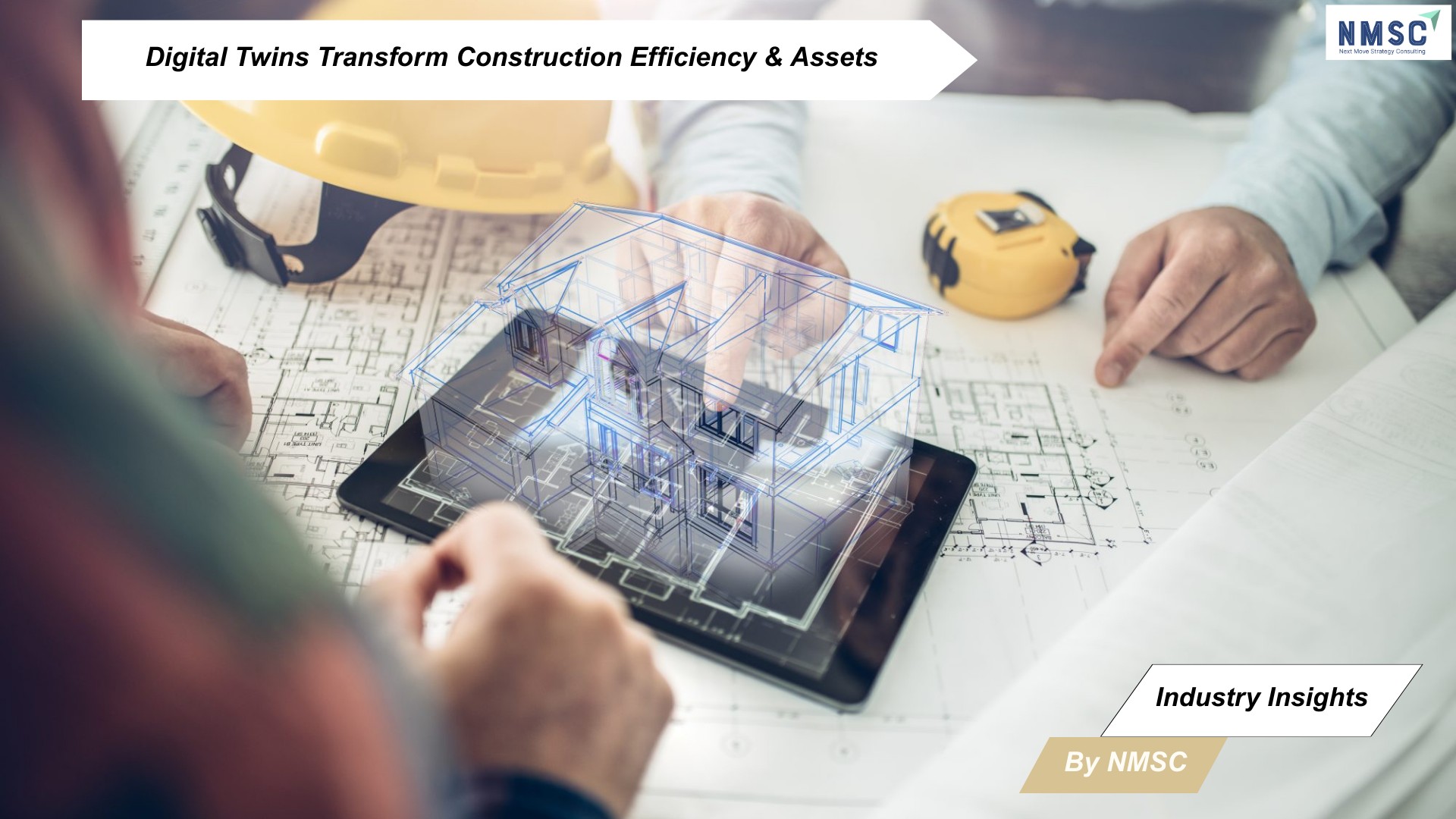Digital Twins Transform Construction Efficiency & Assets
Published: 2025-09-16

Industry Insights from Next Move Strategy Consulting
Pune (Maharashtra) [India], June 26, 2025: In the fast-evolving world of construction and infrastructure development, the integration of Building Information Modelling (BIM) and Digital Twin technology is redefining project efficiency, sustainability, and operational excellence. As the industry shifts toward data-driven solutions, Digital Twins are emerging as critical tools for enhancing asset management and streamlining project delivery.
A New Era of Construction Management
Digital Twins, virtual replicas of physical assets created through 3D BIM modeling, move beyond static representations by syncing with real-time data from IoT devices, sensors, and cloud-based BIM platforms. This dynamic connection creates a digital mirror of buildings or infrastructure, enabling stakeholders to simulate scenarios, predict outcomes, and optimize decisions throughout the project lifecycle. By bridging the physical and digital realms, Digital Twins provide unprecedented visibility into asset performance and behavior.
According to the report by Next Move Strategy Consulting, the global digital twin for construction market is expanding with increased urbanization, greater focus on green buildings, and the growing trend towards smart infrastructure.
"The fusion of BIM and Digital Twin technology is a game-changer for the construction industry," notes a leading industry expert. "It transforms traditional project management into an intelligent, real-time process that drives efficiency and sustainability."
Key Capabilities at a Glance:
-
Real-Time Monitoring: BIM-driven Digital Twins enable continuous tracking of critical systems like HVAC, electrical, and plumbing, leveraging data analytics for early detection of inefficiencies.
-
Maintenance Optimization: Digital Twins enable early detection of inefficiencies, helping improve building performance and reduce operational issues.
-
Cloud-Based BIM Platforms: Digital Twins are powered by cloud connectivity, ensuring real-time updates and continuous synchronization of data.
-
Visualization: Digital Twins provide a dynamic mirror of physical assets, offering visibility into real-time performance and behavior.
Driving Efficiency and Sustainability
Digital Twins empower facility managers with actionable insights into energy flows, occupancy patterns, and maintenance needs, significantly boosting performance. For example, a commercial high-rise utilizing BIM software integrated with a Digital Twin can optimize resource use, reduce energy consumption, and minimize operational waste. This proactive approach replaces reactive repairs, cutting costs and aligning with sustainability goals.
Beyond individual buildings, Digital Twins can be scaled across infrastructure projects, supporting sustainable and efficient development. This scalability supports global environmental standards while reducing carbon footprints.
Industry Impact and Future Outlook
The construction industry’s adoption of BIM-enabled Digital Twins is driving a shift in project management, enabling real-time intelligence, streamlining workflows, and delivering measurable value. Industry stakeholders, from architects to government planners, are leveraging Digital Twins to achieve operational excellence and meet rising demands for sustainable infrastructure.
As the technology evolves, its role in construction and urban planning is set to expand, positioning Digital Twins as a cornerstone of future-ready development. With their ability to integrate data, optimize processes, and foster collaboration, Digital Twins are not just tools—they are catalysts for a smarter, more sustainable future.
Prepared by: Next Move Strategy Consulting














Add Comment